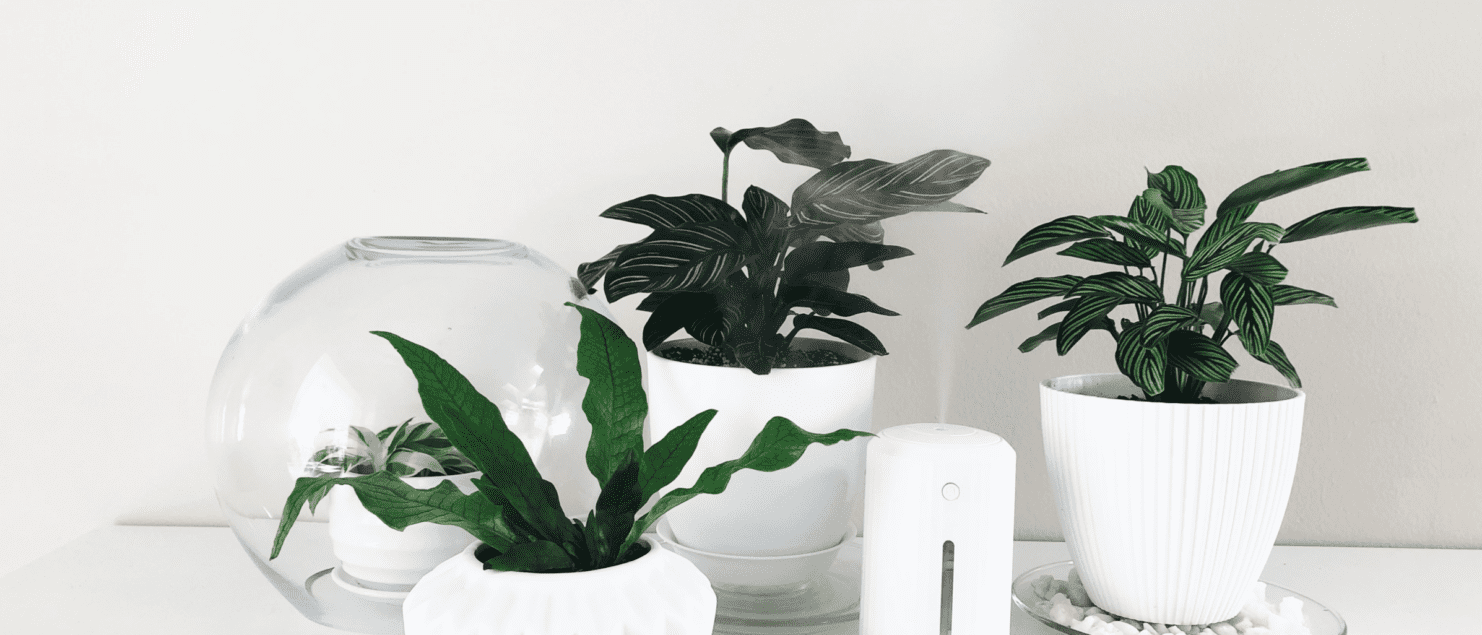How To Increase Humidity For Houseplants
Increasing the humidity around your houseplants is a big deal.
You will find that most houseplants today are native to humid climates, like the rainforest.

Take the Monstera Deliciosa for instance, everyone pretty much has one or knows someone who does. Well, did you know that it’s native to the tropical forests of Mexico?
Tropical forests tend to have a humidity level of 70-90%!
So, your home jungle has to act like a jungle at times, especially during drier months, like winter.
What Is Humidity?

What is it really, right? Well, in simple terms it’s teeny tiny water vapors that are in the air.
It’s basically wet air.
If you live in a tropical or sub-tropical climate (like me) you are no stranger to humidity.
What Does Humidity Do For Houseplants?
Humidity plays an important role in the plants health.

Think of the plants leaves as like your skin. When you’re in a dry environment or in the winter, your skin tends to get dry and could crack. Plants do that too, when they don’t have enough moisture. Plants will display this as browning tips or wrinkled/curled up leaves.
Moisture essentially opens up the pores on the plants leaves allowing for it to ‘breath’ to promote photosynthesis.
Humidity In The Home
Ideally, the average home is around 40-50%. But some plants don’t like that, or can’t even survive at that level.
Most plants like a level of around 50-60% or even higher. If you have a plant that likes higher humidity than 60, I’d look into other options for that plant such as a terrarium.

You don’t want to increase your homes humidity higher than 60 not only for your comfort, but it could also cause some damage.
Mold can grow with constant moisture, and that can be something that you need to keep your eye on as a plant parent.
How To Increase Humidity In Houseplants?
There are a many different ways you can increase humidity in your home, and make your plants happy. Here’s how:
Humidifier

I found that humidifiers are the most effective way to increase humidity.
Humidifiers have a water reservoir that you fill up and it will turn the water into a vapor that emits in a cloud like form over your plants. The cloud of mist will fall over your plants increasing the humidity in that area.
Humidifiers will send out bursts of mist until it’s either empty or if you have a timer set.
It’s a really easy to use and most effective.
Pebble Tray

A pebble tray can increase humidity for one specific plant or for the plant that is sitting on the tray.
The pebble trays I’ve used in the past were just plates with rocks on the bottom that the plant sat in, with water in the rocks. The rocks make sure that the drainage hole can’t suck up water.
What this does is, when the water evaporates it will rise up to that plant, creating a sort of force field around the plant.
I wouldn’t recommend this method on plants that need a lot of humidity, like tropical plants. But this is good for a plant that just needs a little humidity boost along side another option.
Misting Leaves

Daily misting your plants can be an option to temporarily increase the humidity, but only for a little while.
Like the humidifier, it creates a mist that blankets the plants leaves, but unlike a humidifier it’s not constant.
And no one is going to be misting plants every few hours.
Some have found that misting certain plants can lead to leaf problems, like disease.
Misting can create droplets on the leaves, which in combination with cooler temperatures can lead to fungal diseases or powdery mildew. Misting at night can also lead to these issues, since there is not sunlight to help dry off the plant.
I wouldn’t use misting as a primary source of humidity. Some plants do like to have a nice mist every once and a while but I wouldn’t suggest misting regularly.
Grouping

Grouping is when you create a sort of humidity party for your plants by grouping plants closely together.
When you do this, your plants basically pass the humidity back and forth to each other. It almost creates a little jungle indoors, because you essentially created one like they live, in the nature, where the plants naturally are grown closely together.
Terrariums

Last but not least, terrariums. These are for really humid-loving plants. Terrariums are either made of glass or plastic, often see-through. They create little ecosystems in their bubbles. Any humidity that is produced or gathered inside, stays inside.
I have a Calathea White Fusion that hated me, until I put her in a terrarium, which stays at around 70-80% humidity at all times. Now, she’s thriving!
Humidity In Houseplants, How Do I Know When Its Enough?
There are warning signs that your plant will let you know if it’s unhappy.

Browning tips are usually the first indication for me. When my plants have browning on their tips, I know its time to increase the humidity. Other indications include wilting or crispy/crunchy leaves.
Humidity In Houseplants: Moisture is key
Humidty is mucho importante!
There are many ways to include humidity into your plants lives, to fit your life.

Many houseplants have adapted to our home, but increasing the humidty isn’t ever going to hurt.
Biggest rule of thumb is the thinner the leaf, the more humidity it’s going to need.
What humidity techniques have you tried?
Need to know more about humidity for your plants in the winter?
Check out Preparing Your Houseplants For Winter blog!

